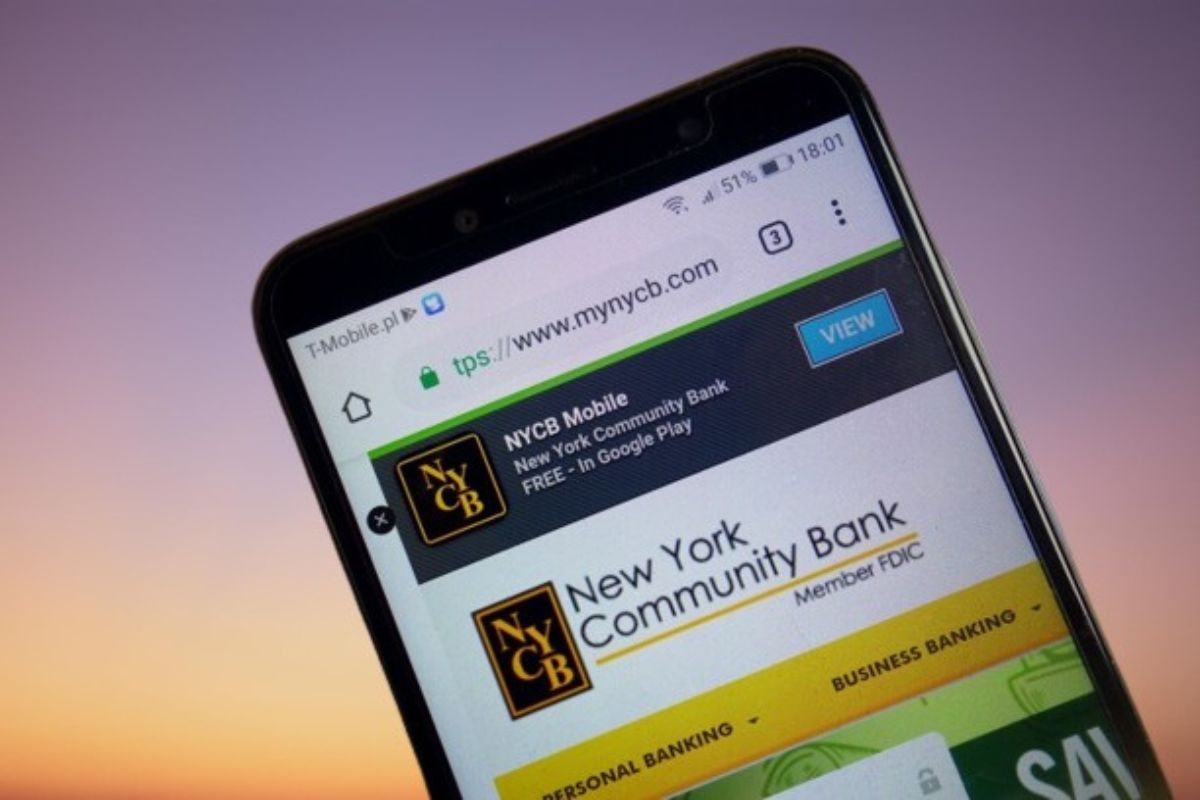Regional Banks Face Crisis: In a dramatic turn of events, regional banks in the United States find themselves on the brink of crisis as New York Community Bancorp’s (NYCB) unexpected move triggers a widespread sell-off. The sudden decline in regional bank stocks has sent shockwaves through the financial markets, raising concerns about the overall health of these institutions.
As investors grapple with the fallout, emotions run high and options trading reflects a growing pessimism. With external factors such as the Federal Reserve’s interest rate decision and a broader market reassessment in play, the spotlight is firmly on NYCB, as its specific challenges, including a Moody’s review and crossing regulatory thresholds, add fuel to the fire.
The implications of this crisis are far-reaching, leaving industry experts and investors alike questioning the future of regional banks and the stability of the financial system as a whole.
Key Takeaways
- Regional U.S. bank stocks experience a significant decline, with New York Community Bancorp (NYCB) shares dropping by 38%.
- There are concerns about the stability of similar lenders, leading to the largest one-day drop in the KBW Regional Banking Index since March 13, 2022.
- The financial health and viability of regional banks are under scrutiny, with rising costs impacting net interest income and investor concerns about sustainability.
- The lack of trust in the regional banking sector is reflected in emotional reactions, options trading, and a shift towards a bearish bias in the options market.
Market Turbulence: Regional U.S. Bank Stocks Experience Sharp Decline
Regional U.S. bank stocks have been rocked by a sharp decline, as evidenced by the unexpected 38% drop in New York Community Bancorp (NYCB.N) shares and concerns about similar lenders’ stability. This sudden downturn has sent shockwaves through the market, triggering a sell-off and raising questions about the overall health of regional banks.
The unexpected dividend cut and surprise loss by NYCB have highlighted vulnerabilities within the sector, leading to the largest one-day drop in the KBW Regional Banking Index (.KRX) since March 13, 2022. Investors are now grappling with the reality that regional U.S. banks are facing a crisis, as uncertainty looms over their ability to weather economic challenges and maintain profitability.
This market turbulence has underscored the need for a deeper analysis of the factors contributing to the decline and the potential implications for the wider financial industry.
Lingering Worries: Financial Health of Regional Banks Under Scrutiny
Amidst the market turbulence and concerns over the stability of regional U.S. banks, scrutiny is intensifying regarding the financial health of these institutions. The recent sell-off has underscored lingering worries about the ability of regional banks to weather the current economic storm.
Rising costs of retaining deposits and the impact on net interest income (NII) have added to investor concerns. The profitability of regional banks heavily relies on their ability to generate lending profits through NII. With increasing costs and a challenging economic environment, investors are questioning the sustainability of regional banks’ financial performance.
This scrutiny is warranted, as the long-term viability of these banks could be at risk if they are unable to adapt to changing market conditions and maintain a healthy financial position. Regional banks must address these concerns head-on to restore investor confidence and ensure their continued success.
Market Response: Emotional Reactions and Options Trading Reflect Pessimistic Outlook
The market’s emotional response and options trading reflect a deeply pessimistic outlook on the regional banking sector. Investor confidence has been rattled, with fears of depositors anticipating imminent collapses. This has led to a sell-off in regional bank stocks, indicating a lack of faith in their financial health. The options market has also shifted towards a more bearish bias, as reflected by the accelerated trading in options linked to the SPDR S&P regional bank exchange-traded fund (.KRE).
This pessimistic outlook is evident in the following ways:
- Increased volatility: The market has experienced heightened levels of volatility, as investors react emotionally to the uncertainties surrounding regional banks.
- Bearish sentiment: Options traders have been actively betting on downside moves in regional bank stocks, indicating a prevailing bearish sentiment in the market.
- Lack of trust: The sell-off and increased options trading reflect a lack of trust in the regional banking sector, as investors seek to protect themselves from potential losses.
External Factors: Federal Reserve’s Interest Rate Decision and Market Reassessment
Investor anxiety heightened as the Federal Reserve’s decision to maintain unchanged interest rates led to a market reassessment, impacting regional bank loan profits and the value of securities they hold. This unexpected move by the Federal Reserve has caused significant concern among investors, as it has disrupted the anticipated rate cut timeline, pushing it from March to May.
As a result, regional banks are now faced with prolonged high payouts to depositors at a time when loan demand is weakening. The repercussions of this decision can already be seen in the declining shares of other regional banks such as Valley National Bancorp, Citizens Financial Group, and Regions Financial Corp.
These external factors have created a crisis situation for regional banks, requiring them to reassess their strategies and adapt to the changing market landscape.
NYCB’s Specific Challenges: Moody’s Review and Regulatory Threshold Crossing
NYCB’s challenges have been amplified by Moody’s review and the regulatory threshold crossing, raising concerns about weak earnings, declining capitalization, and growing reliance on wholesale funding. This combination of factors has put the bank in a precarious position, with potential consequences for its future stability and profitability. Here are three key aspects to consider:
- Weak earnings: Moody’s review highlights the bank’s struggle to generate strong profits, indicating potential underlying issues with its business model and operational efficiency.
- Declining capitalization: The regulatory threshold crossing necessitated NYCB’s decision to cut its dividend and bolster its capital position. This suggests that the bank’s financial strength may have been compromised, posing risks to its ability to withstand future challenges.
- Growing reliance on wholesale funding: An increased dependence on wholesale funding exposes NYCB to market volatility and potential liquidity risks, further exacerbating its vulnerability in uncertain economic conditions.
These challenges underscore the need for NYCB to address structural weaknesses and implement strategic measures to regain stability and investor confidence. Failure to do so could have far-reaching implications for the bank and the wider regional banking sector.
Conclusion Of Regional Banks Face Crisis
The unexpected move by NYCB has triggered a sell-off in regional bank stocks, causing market turbulence and raising concerns about the financial health of these banks.
Emotional reactions and options trading reflect a pessimistic outlook, while external factors such as the Federal Reserve’s interest rate decision and market reassessment add to the uncertainty.
NYCB’s specific challenges, including Moody’s review and regulatory threshold crossing, further contribute to the crisis faced by regional banks.
This situation calls for a critical analysis of the factors at play and potential solutions to mitigate the impact.
Our Reader’s Queries
Q1 Is NYCB a regional bank?
A New York Community Bancorp, Inc. serves as the holding company for New York Community Bank, which operates as a division of Flagstar Bank, N.A. As one of the nation’s largest regional banks, it boasts a network of 436 locations.
Q2 What banks are owned by NYCB?
A New York Community Bancorp, Inc. is the corporate parent of Flagstar Bank, N.A., ranking among the nation’s largest regional banks.
Q3 Who founded NYCB?
A Established in 1948 by George Balanchine and Lincoln Kirstein, the Company gained global acclaim for its dynamic and modern approach to dance. In the subsequent year, Jerome Robbins joined NYCB, collaborating with Balanchine to shape an impressive repertoire and solidify the Company’s presence in New York.




